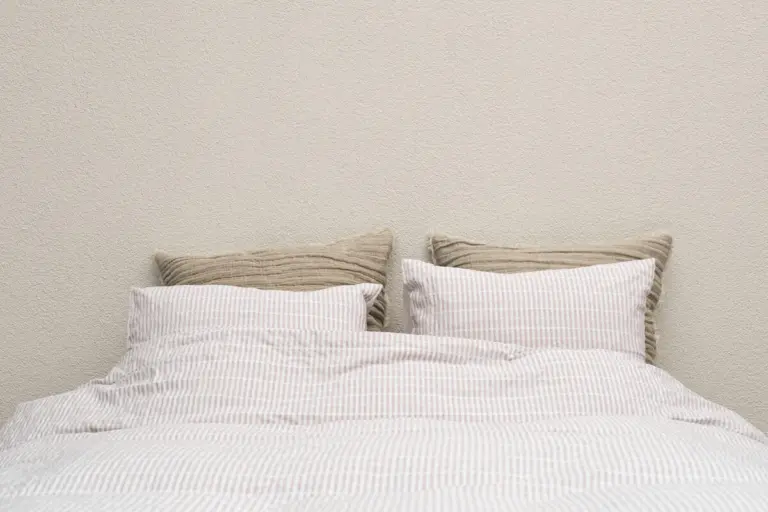How to Sleep Comfortably with a Buckwheat Pillow: Setup, Adjustments & Tips
Master Your Buckwheat Pillow: Setup, Loft Adjustments & Comfort Tips
If you’ve tried a buckwheat pillow but didn’t feel the magic everyone talks about, the problem might not be the pillow—it’s the setup. The secret to truly restful nights lies in how you sleep with your buckwheat pillow. With a few simple adjustments, you can unlock its full potential: better spinal alignment, cooler sleep, and personalized comfort that adapts perfectly to your body.
Why Fit and Loft Matter More Than You Think
A buckwheat pillow isn’t “one height fits all.” The loft—the height and firmness of the pillow—determines whether your spine stays aligned or strains through the night. Too high, and your neck bends forward; too low, and your head tilts back. Both can cause stiffness in the morning.
The ideal fit feels balanced—your nose should align with the center of your spine when lying on your back. This natural alignment lets your muscles fully relax, which is why proper adjustment often makes a bigger difference than replacing the pillow itself.
Step-by-Step: Adjusting Your Buckwheat Pillow
Most buckwheat pillows come with a zipper so you can fine-tune the hull volume. Here’s how to adjust it for perfect support:
- Open the zipper and remove about a handful of hulls at a time.
- Test the loft by lying down for at least two minutes—let the hulls settle naturally.
- Add or remove hulls until your neck feels supported but not lifted.
- Shape the hulls with your hands to create a gentle cradle for your head and neck.
Tip: Store removed hulls in a breathable bag—you may need them back later. Many sleepers find their sweet spot after a few nights of small tweaks.
Finding Your Ideal Sleep Position
Different sleep positions need different pillow heights:
- Back Sleepers: Moderate loft, allowing the head to rest in line with the shoulders.
- Side Sleepers: Slightly higher loft to fill the gap between shoulder and head.
- Stomach Sleepers: Minimal loft—use a thin pillow or remove more hulls to prevent neck strain.
The beauty of buckwheat is its adjustability. You can reshape the fill each night to match how you naturally sleep, rather than forcing your body to adapt to a fixed pillow.
Comfort Boosters: Covers, Scents, and Cooling Tricks
Small details can transform your sleep experience:
- Covers: Choose a breathable cotton or linen pillowcase to preserve airflow. Avoid thick synthetics that trap heat.
- Scents: Add a few drops of lavender or hinoki (Japanese cypress) essential oil to the outer cover for a calming aroma.
- Cooling Tips: In summer, place the pillow near a window to release warmth before bed. In winter, briefly warm the cover—not the hulls—for gentle comfort.
A well-prepared pillow feels like it “breathes” with you—firm where it needs to be, cool and comforting everywhere else.
When to Replace or Refresh Your Pillow
Buckwheat hulls naturally compact and absorb moisture over time. Here’s how to keep your pillow in top shape:
- Refresh the hulls: Sun-dry every few weeks to remove humidity.
- Replace when needed: Every 3–5 years, or sooner if hulls flatten and lose springiness.
- Check for odor or clumping: Signs that moisture has built up inside.
- Clean only the cover: Never wash hulls—moisture damages their structure.
Proper care doesn’t just preserve hygiene—it restores that crisp, supportive feel that defines a real sobakawa pillow.
Conclusion
Sleeping comfortably with a buckwheat pillow isn’t about getting used to its firmness—it’s about customizing it. Once you find your ideal loft and rhythm, it feels like the pillow is built just for you. With thoughtful setup and care, your sobakawa pillow will reward you night after night—with cooler, deeper, more balanced sleep.

